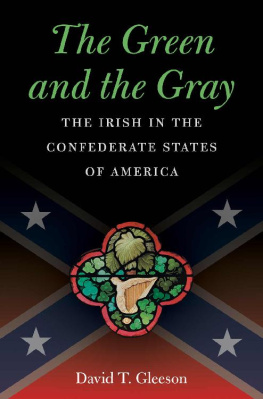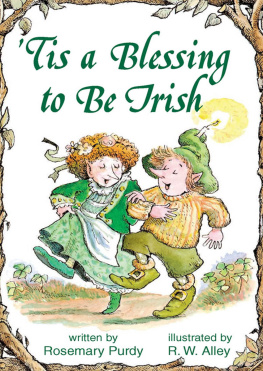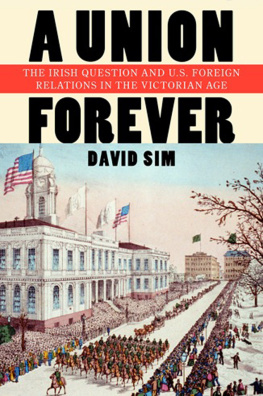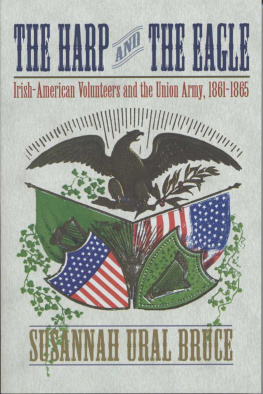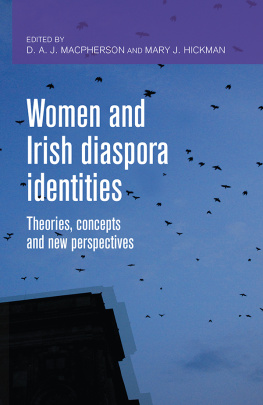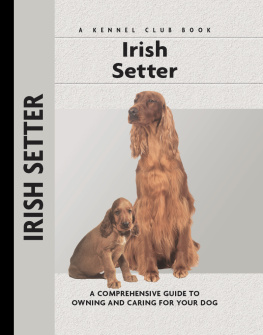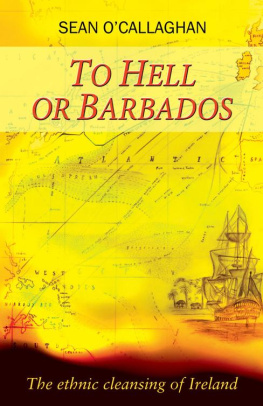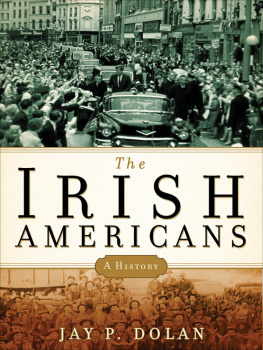The Green and the Gray
CIVIL WAR AMERICA
Gary W. Gallagher, Peter S. Carmichael, Caroline E. Janney, and Aaron Sheehan-Dean, editors
The Green and the Gray
THE IRISH IN THE CONFEDERATE STATES OF AMERICA
David T. Gleeson
THE UNIVERSITY OF NORTH CAROLINA PRESS Chapel Hill
2013 THE UNIVERSITY OF NORTH CAROLINA PRESS
All rights reserved. Designed by Sally Scruggs and set in Quadraat and Bulmer by codeMantra. Manufactured in the United States of America The paper in this book meets the guidelines for permanence and durability of the Committee on Production Guidelines for Book Longevity of the Council on Library Resources. The University of North Carolina Press has been a member of the Green Press Initiative since 2003.
Library of Congress Cataloging-in-Publication Data
Gleeson, David T.
The green and the gray : the Irish in the Confederate States of America / David T. Gleeson.
pages cm (Civil War America)
Includes bibliographical references and index.
ISBN 978-1-4696-0756-6 (cloth : alk. paper)
ISBN 978-1-4696-2724-3 (pbk. : alk. paper)
ISBN 978-1-4696-0757-3 (ebook)
1. Irish American soldiersConfederate States of AmericaHistory. 2. United StatesHistoryCivil War, 18611865Participation, Irish American. 3. Confederate States of America. ArmyHistory. 4. Irish AmericansSouthern StatesHistory19th century. 5. ImmigrantsSouthern StatesHistory19th century. 6. Irish AmericansSouthern StatesSocial conditions19th century. I. Title.
E 585. I 75 G 56 2013
973.7420899162dc23
2013009241
Portions of this work appeared earlier, in somewhat different form, in Another Lost Cause: The Irish in the South Remember the Confederacy, Southern Cultures 17 (Spring 2011): 5074, reprinted by permission; Irish Rebels, Southern Rebels: The Irish Confederates, in Civil War Citizens: Race, Ethnicity, and Identity in Americas Bloodiest Conflict, edited by Susannah J. Ural (New York University Press 2007), reprinted with permission; and To Live and Die [for] Dixie: Irish Civilians and the Confederate States of America, Irish Studies Review 18 (May 2010): 13953, reprinted by permission of Taylor & Francis Ltd., www.tandfonline.com.
For Amy and Emma
Contents
Tables and Illustrations
TABLES
1. Irish in the South, 1860 /
2. Vote for Stephen Douglas in the 1860 Presidential Election in Selected Southern Cities /
3. 1860 Presidential Election in New Orleans /
4. Irish Units in the Confederate Army /
5. Occupational Status of Irish Confederate Soldiers in Selected Companies /
6. Irish Confederate Casualty and Desertion Rates in Selected Units /
7. Company Casualty and Desertion Analysis of the 6th Louisiana Infantry /
ILLUSTRATIONS
John Mitchel /
Montgomery Guards Flag /
John O. Farrell /
Richard (Dick) Dowling /
Bishop Patrick N. Lynch /
Irish Volunteer Memorial, Charleston, South Carolina /
Irish Volunteer Memorial Plate /
James K. McCann /
Dick Dowling/Davis Guards Memorial, Houston, Texas /
Acknowledgments
My first thanks must go to David Perry and Gary Gallagher, who encouraged me to do this project. Since I began, their support and patience have been key to its successful completion. Other folk at the University of North Carolina Press, especially Cait Bell-Butterfield, John K. Wilson, and Ron Maner, have put a lot of work into the production and I am very grateful for that. Gallagher and one anonymous reader provided excellent criticism which helped me greatly improve the final product.
Beyond the Press, numerous people have been helpful with suggestions, sources, and support along the way. Jimmy and Brendan Buttimer have always been supportive and great sounding boards for all things Irish in the South. Their work on Irish Savannah, which I draw on in places in this book, is exemplary scholarship. They are great colleagues as well as great friends. Stephen White from Charleston has been an excellent guide to the Irish element of that city as a very welcoming presence there when I began the project in earnest. David Brown of the University of Manchester has been a long-time fellow researcher in the plain folk of the Old South and our numerous conversations at conferences, on research trips, and at football (the real kind!) matches have always aided me in honing my arguments. Other researchers of Irish America and the American South who have provided research leads and analytical insight include, Donald Beagle, Bryan Giemza, Jerry Hackett, Brian Kelly, Frank Towers, Bryan McGovern, Kerby Miller, Randall Miller, Vernon Burton, Malcolm Smith, Mike Thompson, Susannah Ural, Robert Rosen, Christian Keller, David Dangerfield, Miles Smith, Patrick Doyle, Denis Bergin, Bruce Nelson, Matt OBrien, David Sim, Robert Cook, Mitchell Snay, Andrew Heath, Enrico Dallago, Bernadette Whelan, na Bromell, Laura Sandy, Jamie Woods, Jeff Kerr-Ritchie, Fionnghuala Sweeney, Davy Kincaid, Jim Gannon, Donald Williams, and the late David Heisser. My graduate school mentor, E. Stanly Godbold, remains a good friend and a supporter of all my work.
As always, numerous archivists and librarians, the historians friends as I call them, at all the archives listed in the bibliography have been very helpful. Some went above and beyond their duty to researchers. John Coski and Teresa Roane at the Brockenbrough Library at the Museum of the Confederacy were particularly so, as was Gillian Brown at the Diocese of Savannah. Paddy Fitzgerald, Christine Johnston, and Brian Lampkin of the Centre for Migration Studies at the Ulster American Folk Park were also very welcoming. Special mention must also be made of Brian Fahey of the Catholic Diocese of Charleston. He has been unfailing in fulfilling my numerous requests both in Charleston and from across the Atlantic Ocean.
Here at Northumbria University my deans, department head, and research leads have always been encouraging of the project. I received ample support and research leave to help me complete this book. Many thanks then must go to Lynn Dobbs, Don MacRaild, David Walker, and Sylvia Ellis. Don and Sylvia as well as other colleagues in my department, especially James McConnel, Tanja Bueltmann, Mike Cullinane, Joe Street, Kyle Hughes, Michael Bibler, Randall Stephens, and Brian Ward, have aided my analysis of all things racial, diasporic, and southern. My Ph.D. students, Brian Langley, Craig McLaughlan, and Peter OConnor, keep me on my toes and are always good for stimulating discussions of the Civil War. This project began in the United States, and colleagues at my former institutions of work have also played a part in supporting my effort, especially Nancy White and Mike Price at Armstrong Atlantic State University and Simon Lewis, Jason Coy, Marvin Dulaney, Amy McCandless, Lee Drago, Bill Olejniczak, Moore Quinn, Dale Rosengarten, Sam Hines, and Cynthia Lowenthal at the College of Charleston. Graduate assistant at the College, Charles Wexler, did some valuable research on my behalf. Sam Thomas of the T. R. R. Cobb House, Lieutenant Colonel William Bell, USMC, of the Citadel, and Bucky Hoffman of Huntersville, North Carolina, provided some important research on Irish Confederates for me and I thank them for that. Various folk provided accommodation on my travels and I want to recognize especially Catherine Clinton, John Lally, Michael de Nie, Andy Pelland, and Maureen Halliday for doing so. I was also fortunate to receive research fellowships from the Virginia Historical Society and the Filson Historical Club. I am grateful for those and hope this book reflects well on their support.
Finally, I would like to thank my parents, Barry and Freda, and my brothers, Barry and Brian, who have always been very supportive of my scholarly endeavors. My parents provide a haven from the academic world when one needs a break. Barry and his wife Rodica have put me up on my numerous trips to the British Library in London, while Brian has done likewise for my visits to Dublin. Thanks lads!
Next page
